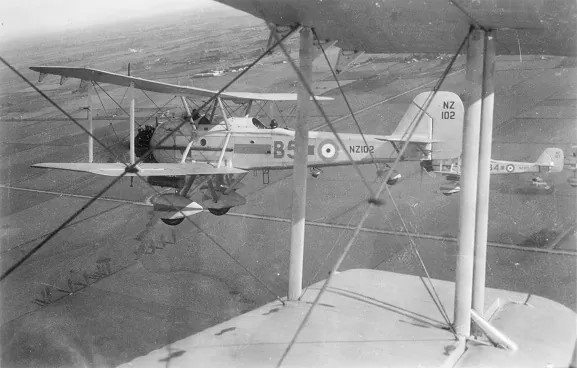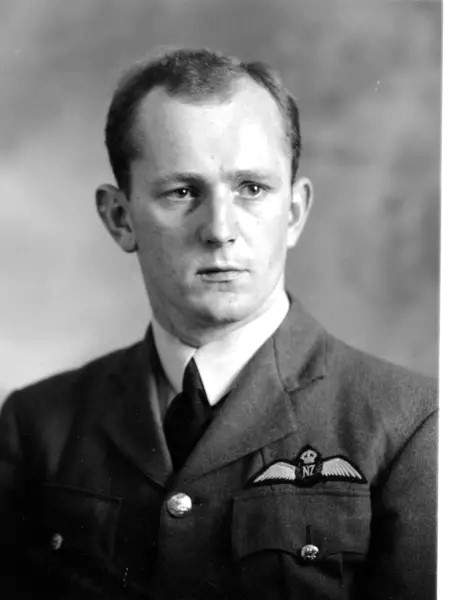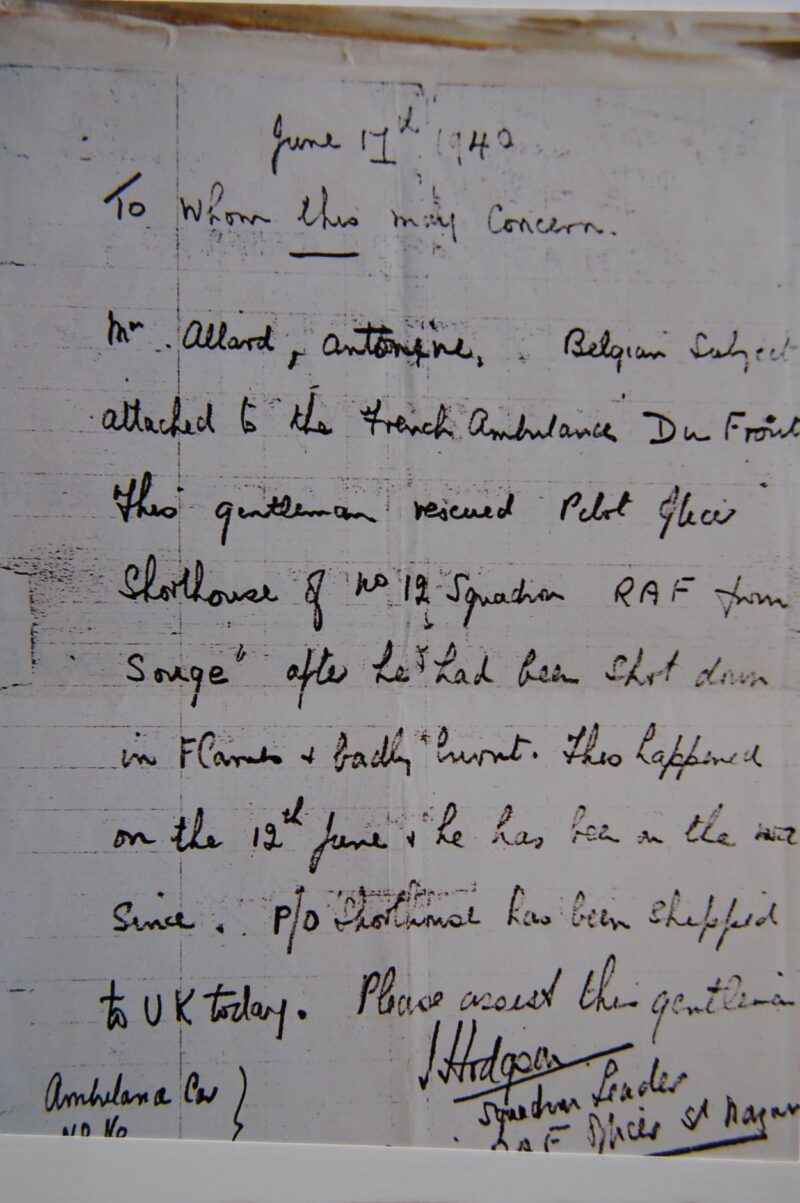Research
Research
Research
The Early Days
In the late 1930s, as tensions rose across Europe, Britain began to prepare for the looming threat of war. Still recovering from the devastation of World War I, Britain, led by Prime Minister Neville Chamberlain initially pursued a policy of appeasement, in hopes of avoiding another conflict. However, the aggressive expansion of Nazi Germany under Adolf Hitler, particularly after the annexation of Austria in 1938 and the invasion of Czechoslovakia in 1939, made it clear that war was becoming inevitable.

Vildebeest NZ102 in formation with NZ107 over the Canterbury Plains, near RNZAF Station Wigram, 3 April 1938.
(Credit: Air Force Museum of New Zealand)
Britain was already ramping up its rearmament efforts, increasing military production, expanding the Royal Air Force (RAF), and building up its navy. The growing threat from the German Luftwaffe, prompted Britain to prioritize the development of its air capabilities. Starting in the mid-1930s, the British government increased funding for aircraft production and training, focusing on both fighter and bomber aircraft.
Many New Zealanders had stayed in the RAF after the First World War or had joined it between the wars. Several of them held high positions. Air Chief Marshal Sir Keith Park (as he later became) was chief of staff to the head of Fighter Command. Air Marshal Sir Arthur Coningham was then a group commander in Bomber Command, as was Air Vice-Marshal C. T. MacLean.
From July 1937 until the outbreak of war in September 1939, the RAF conducted selection courses for pilots in New Zealand. Although many thousands applied, only a few volunteers were successful. These successful candidates were trained to pilot standard aircraft either by the RNZAF or by contracted provincial flying clubs. Upon completing these courses, pilots were offered short service commissions with the RAF and departed for England to undergo service flying training.
From July 1937 until the outbreak of war in September 1939, the RAF conducted selection courses for pilots in New Zealand. Although many thousands applied, only a few volunteers were successful. These successful candidates were trained to pilot standard aircraft either by the RNZAF or by contracted provincial flying clubs. Upon completing these courses, pilots were offered short service commissions with the RAF and departed for England to undergo service flying training.

Salvage party with the wreck of Vildebeest NZ102 at Wigram, 23 February 1939. Flown by trainee pilot David ‘Sealy’ Clark. A perfect landing was soon compromised by the failure of the wheels to rotate, sending NZ102 into a slow and undignified somersault onto its back. Clark served with Bomber Command, reaching the rank of Wing Commander, was awarded the Distinguished Flying Cross twice and was Mentioned in Dispatches.
(Credit: Air Force Museum of New Zealand)
Nearly 350 New Zealanders were trained under the war course scheme and were among the first to participate in early Bomber Command raids against Germany. Alongside pilots assigned to RAF Fighter Command, these New Zealanders were actively involved in the Battle of France and subsequently the Battle of Britain. Many of these pre-war volunteers lost their lives in active service.
John Shorthouse, known to all as Jack, was the eldest of three brothers who served with the RNZAF. Having been trained as a pilot in the pre-war RAF scheme, he was posted in 1940 to 12 squadron flying Fairey Battles from Echmines in France. Their objectives were destroying bridges to slow the German advance.
Jack recalled “Three (Messerschmitt) 109s took a particular liking to my Battler and stern attacks soon killed LAC Copley in the back, wrote off the instrument panel and set the engine ablaze. I opened the canopy but that sucked the flames into the cockpit, so I shut it again.
“It got terribly hot and (I) got off the seat mighty quick and stood out on the wing and watched a line of bullet holes march along the wing past me and up over the engine cowling, all in slow motion. I turned around to see my observer (Sg.t Cotterill) still in the aircraft, so I climbed back in and crouched on my seat and pulled the pole back, but the flames were becoming bad, my fingers and chest we burning so over the side I went.”
Jack, by then delirious, was found by a Belgian ambulance which took him to St Nazaire.
Jack eventually got back to England. His Navigator Cotterill also survived but was lost on ops later in the war.. After eight weeks in Hospital he returned to 12 squadron, but then was posted to 1 PRU, a photo-reconnaissance squadron operating Spitfires. Not liking this flying he was sent to Canada as Chief Flying Instructor of a pilot school at Moose Jaw.

John (Jack) Sidney Shorthouse (Credit: Online Cenotaph)
He returned to serve with Bomber Command on 44 squadron. John Chatterton remembered Jack, by then Flight Commander fondly:
“Ebullient and charismatic, he had been my hero since taking me on my very first raid, in Oct 43, on a very dirty night to Leipzig. We suffered icing more or less continuously for most of the trip and I was impressed by the nonchalant way he landed without the use of the airspeed indicator. We would have followed him to the Jaws of Hell; come to think of it we often did”.
Later Shorthouse became CO of 189 squadron. Post war he had a long career with TEAL and Air New Zealand becoming an instructor on 747 jets.

The note given to the Belgian Air Force ambulance driver who saved Jack from capture and drove him to St Nazaire. He later became Baron Allard and the two were reunited some twenty years later.
(Credit: NZBCA Archives)
November 3, 2024